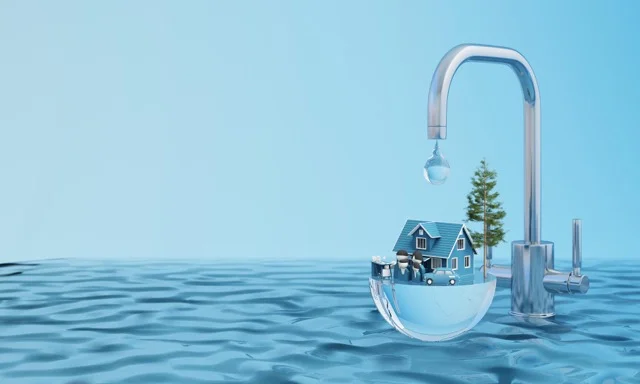The 9-Minute Rule for Reclaim Waste
The 9-Minute Rule for Reclaim Waste
Blog Article
The 9-Minute Rule for Reclaim Waste
Table of Contents10 Easy Facts About Reclaim Waste DescribedThe Facts About Reclaim Waste RevealedThe Best Guide To Reclaim WasteGet This Report about Reclaim WasteThe Facts About Reclaim Waste Uncovered
Check out the types, incidents, and forms of liquid waste. Domestic sewer waste refers to the waste and products from a residential septic system. This kind of waste is developed by human beings in residences, institutions, and other buildings. This only includes septic storage tanks that have a drainpipe field. The proper monitoring and disposal of domestic sewer waste need fluid waste to be moved to a sewage therapy plant where the appropriate techniques and tools are put on cleanse and dispose of waste.
Business waste typically consists of potential risks, such as flammable products or a combination of fluid and strong waste items, and requires an extra advanced and detailed disposal procedure. The disposal of business waste generally involves the purification of waste prior to transportation to guarantee risk-free and appropriate disposal. Industrial waste is developed from byproducts and runoff of commercial processes and manufacturing.
This sort of waste can not utilize the exact same sewage monitoring transportation or processes as septic or industrial liquids. The hazardous waste monitoring process calls for the evaluation and testing of fluid waste before it undergoes the disposal process (liquid waste removal melbourne). Drainage waste is the fluid waste that originates from runoff and excess stormwater in extremely booming locations or cities
Runoff waste can cause contamination and flooding if not dealt with properly. Ensuring appropriate waste administration can avoid disasters and decrease environmental injury.
Little Known Facts About Reclaim Waste.
Get in touch with PROS Providers today to learn regarding our waste management and disposal services and the correct means to care for the liquid waste you generate.
(http://peterjackson.mee.nu/do_you_ever_have_a_dream#c2256)This supposed 'wastewater' is not only a crucial resource however, after therapy, will be released to our land, waterways or the sea. Used water from toilets, showers, bathrooms, kitchen area sinks, laundries and industrial processes is understood as wastewater.

water made use of to cool down machinery or tidy plant and equipment). Stormwater, a kind of wastewater, is overflow that flows from agricultural and metropolitan locations such as roofings, parks, yards, roadways, liquid waste removal melbourne paths and seamless gutters right into stormwater drains pipes, after rainfall. Stormwater streams unattended directly to regional creeks or rivers, eventually getting to the sea.
Reclaim Waste Can Be Fun For Anyone
In Queensland, many wastewater is treated at sewer treatment plants. Wastewater is carried from residential or industrial sites through a system of sewers and pump terminals, understood as sewage reticulation, to a sewage therapy plant.
The Department of Natural Resources encourages city governments about managing, operating and maintaining sewage systems and treatment plants. In unsewered locations, local governments might call for owners to install specific or family sewage treatment systems to deal with residential wastewater from commodes, kitchens, bathrooms and laundries. The Department of Natural Resources authorises making use of house systems when they are confirmed to be effective.
In some new communities, therapy of some stormwater to get rid of clutter, sand and gravel has actually started making use of gross pollutant traps. Wastewater treatment takes place in 4 stages: Eliminates solid issue.
Wastewater then moves right into large containers where solids settle and are eliminated as sludge. Grease and scum are skimmed from the surface area. Utilizes little living microorganisms referred to as micro-organisms to damage down and eliminate remaining liquified wastes and great fragments. Micro-organisms and wastes are included in the sludge. Gets rid of nitrogen and phosphorus nutrients that can create algal blooms in our rivers and threaten water life.
All about Reclaim Waste
Nutrient removal is not offered at all sewage treatment plants since it requires pricey specialized devices. It is coming to be extra usual in Queensland. Clear liquid effluent created after treatment may still contain disease-causing micro-organisms. If this effluent is launched into rivers such as rivers or the sea, the micro-organisms will eventually die out.

Most wastewater streams into the sewerage system. Under the Act, regional federal governments provide approvals and permits for ecologically relevant activities (ERAs) entailing wastewater launches that could have a neighborhood influence.
Some Known Questions About Reclaim Waste.
Or else, samples are taken for lab evaluation. Frequently lots of examinations are needed to establish the levels of each of the different pollutants such as oils, heavy metals and pesticides in water. Tracking gives valid information about water high quality and can verify that permit problems are being fulfilled. The info acquired with monitoring supplies the basis for making water top quality choices.
Report this page